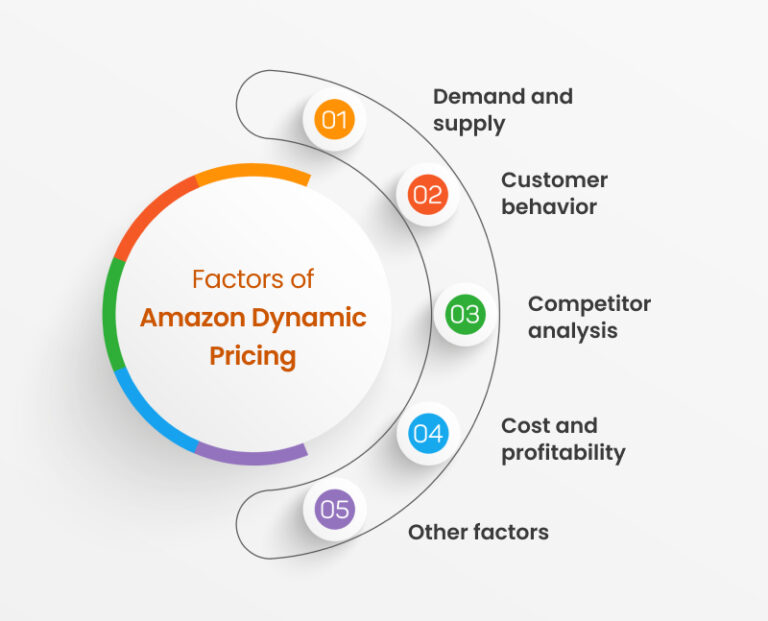Cracking Amazon's AI: Essential Insights for the Digital Marketplace

When people think of AI, they imagine chatbots, self-driving cars, and automation. But what if I told you that some of the most powerful AI systems aren’t just tools but silent strategists—shaping markets and consumer behavior without us even realizing it?
Amazon harnesses cutting-edge AI to optimize its vast e-commerce operations. While this shapes a competitive arena, businesses can spot opportunities by tracking these trends and cultivating robust customer loyalty.
Let’s dissect the core AI strategies Amazon implements and glean actionable insights for businesses.
1. Amazon’s Anticipatory Shipping: AI Knows What You’ll Buy Before You Do
How It Works:
Amazon’s anticipatory shipping AI predicts what customers will buy before they even place an order. This is achieved through machine learning models analyzing:
- Purchase history
- Browsing behavior
- Local and seasonal trends
- Product demand fluctuations
The Strategy:
- AI predicts upcoming purchases and moves inventory closer to customers.
- Products are stocked at fulfillment centres near likely buyers, reducing delivery time.
- In some cases, Amazon ships products to local hubs before orders are placed, assuming purchases will happen soon.
Why It’s Powerful:
- Encourages impulse buying by reducing friction.
- Builds customer trust with ultra-fast delivery.
- Creates a monopoly effect, making it harder for smaller retailers to compete.
How Amazon Avoids Wasted Shipments:
- Rerouting before final delivery: Unsold items are sent to other high-demand locations.
- Dynamic discounting: AI lowers prices or promotes overstocked products.
- Flexible inventory management: Products stay in warehouses until demand rises.
- Returns to suppliers or liquidation: Overstock is either returned or resold at a discount.
Business Takeaway:
- Use AI-driven demand forecasting to optimize inventory management.
- Leverage regional fulfillment strategies to reduce delivery times.

2. Amazon’s Real-Time Pricing: How AI Fine-Tunes Market Fluctuations
How It Works:
Amazon’s pricing isn’t fixed—it’s controlled by AI that adjusts prices based on:
- Competitor pricing (on and off Amazon)
- Supply and demand trends
- Customer shopping behavior
- Time of day and location
AI Pricing Tactics:
- Undercuts competitors: AI instantly lowers prices when rivals do.
- Maximizes profits: During high demand, AI raises prices.
- Amazon might test different prices on different shoppers to see what they’ll pay by A/B testing.
- Amazon’s pricing might make it harder for smaller sellers to compete.
- Some people think Amazon’s low prices could push out other sellers, but it’s hard to prove.
- Hidden Discounts: AI detects hesitant buyers and offers exclusive discounts.
- Surge Pricing: Prices increase during peak demand, similar to Uber.
How Small Businesses Can Compete:
- Use price-tracking tools (like Keepa) to monitor Amazon’s pricing shifts.
- Bundle products uniquely (Amazon’s AI struggles with bundle comparisons).
- Establish a strong off-Amazon presence to avoid direct price wars.

3. The “Shadow Seller” Strategy: How Amazon Competes With Its Own Sellers
How It Works:
- Amazon collects sales data from third-party sellers.
- AI analyzes top-performing products.
- Amazon launches a private-label version (Amazon Basics, Solimo, etc.) at a lower price.
- Amazon’s search results might show their own products first, which could affect how many people see other sellers’ items.
Examples:
- Diapers.com: Amazon launched its own diaper brand, undercut Diapers.com, then acquired and shut them down.
- Allbirds: Amazon released an identical sustainable shoe at a fraction of the price.
- Peak Design: Amazon copied their $99 camera bag and sold a similar one for $32.
How Small Businesses Can Fight Back:
- Build a loyalty-driven brand outside Amazon (via social media and email marketing).
- Sell customized or patented products Amazon can’t copy.
- Use multi-channel sales strategies (Shopify, Walmart, etc.) to reduce dependency on Amazon.

4.Amazon’s Search Dynamics: Analyzing Potential Influences on Product Placement
How It Works:
- Amazon’s search algorithm (A9) prioritizes Amazon-owned products.
- Even if a third-party seller has better reviews, Amazon tweaks ranking factors to favor itself.
- Search queries are altered to guide users toward Amazon’s products. Many shoppers see Amazon’s products at the top of search results, even when other products have better reviews.
In 2019, a Wall Street Journal investigation revealed Amazon changed search results to push its own high-margin products.
How Small Businesses Can Compete:
- Optimize listings for long-tail keywords (e.g., “durable USB-C cable with fast charging”).
- Drive traffic using Google, social media, and YouTube instead of relying solely on Amazon search.
- Build a strong off-Amazon presence to establish trust before customers even visit Amazon.

5. The AI-Driven Buy Box: Understanding Amazon’s Product Selection Engine
Why the Buy Box Matters:
- Over 82% of Amazon sales happen through the “Add to Cart” button (the Buy Box).
- Amazon’s AI decides who wins the Buy Box based on seller metrics.
- There’s a potential impact where Amazon’s Buy Box algorithm favors its own product listings or FBA sellers.
How It Works:
- The Buy Box algorithm considers factors like shipping speed and customer reviews, which could tilt the playing field toward Amazon’s offerings.
- Third-party sellers are forced to offer lower prices to compete.
- Shifts in pricing or seller performance metrics can alter Buy Box eligibility. In other words Changes in price or how well a seller performs can change who gets the ‘Buy Now‘ button.
How Small Businesses Can Compete:
- Maintain high seller ratings and fast shipping speeds.
- Offer unique bundles to differentiate from Amazon’s direct products.
- Drive external traffic to your product pages to increase conversions.

The Complexities of Amazon’s AI: Navigating the Discussion
AI is revolutionizing business, but many of its most powerful strategies are never openly discussed. Why? Driven by the competitive landscape.
1. Lack of Transparency
Big corporations protect their AI strategies like state secrets. Here’s why:
- Corporate Secrecy – AI-driven decisions (like Amazon’s Anticipatory Shipping) operate behind closed doors, with no external audits.
- Competitive Edge – Companies don’t disclose AI models because competitors could replicate them.
Example: Amazon’s AI silently predicts what you’ll buy and ships it before you even place an order!
2. Ethical Concerns
Many AI techniques raise ethical red flags:
- Bias & Manipulation – AI-driven pricing can push prices higher for certain users based on past behavior.
- Dark AI Patterns – Tactics like fake urgency (“Only 1 left in stock!”) pressure users into impulse buying.
Example: Some users report fluctuating prices after repeated searches, potentially linked to dynamic pricing algorithms.
3. Competitive Advantage
Big tech firms monetize their AI insights instead of revealing them:
- Amazon’s proprietary Buy Box Algorithm has potential impacts on third-party sellers, with its operational details remaining confidential.
- Market Domination – Companies use AI to dominate industries without giving smaller businesses a chance.
Example: Amazon was caught using seller data to promote its own private-label products in India, leading to legal scrutiny.
Is This Even Legal?
AI-driven manipulation might be ethically questionable, but it’s not always illegal:
- Amazon’s private labels – While unfair, there are no strict global laws preventing Amazon from launching its own competing products.
- Regulatory Investigations – Governments in the US, Europe, and India are probing AI self-preferencing as anti-competitive behavior.
Amazon’s AI may be legal… but is it ethical?
Can Small Businesses Compete With AI Giants?
If big corporations have secret AI strategies, how can small businesses survive?
1. Ethical First-Party Data Collection
Small businesses can collect and use their own data legally:
- Customer Interactions – Track website analytics, chatbot data, and purchase history to predict trends.
- Surveys & Feedback – Directly ask customers about their needs.
Example: Brands like Glossier use customer feedback to design new products—no AI tricks, just insights!
2. Smart Data Partnerships
Instead of relying on shady AI tactics, collaborate legally:
- Industry Partnerships – E-commerce stores can share insights with logistics firms for better demand forecasting.
- Public Datasets – Platforms like Kaggle and Data.gov provide free datasets for business use.
Example: Tesla shares some AI insights on self-driving models to accelerate industry adoption.
3. Ethical Web Scraping & AI Insights
While big companies scrape vast data from the internet, small businesses can do it ethically:
- Public Competitor Analysis – Use tools like Octoparse to extract public pricing data without breaking terms of service.
- AI-Powered Sentiment Analysis – Monitor social media conversations using AI tools like Brandwatch.
Example: Many startups analyze Reddit discussions to predict trending consumer preferences.
Has Anyone Ever Beaten Amazon?
Yes! Some small businesses have successfully fought back:
Case Study 1: Allbirds vs. Amazon
- Problem: Amazon copied Allbirds’ famous wool sneakers and sold them for half the price.
- Solution: Allbirds doubled down on its sustainability and ethical branding to differentiate itself.
- Result: Allbirds retained customer loyalty, while Amazon’s copycat failed due to lack of trust.
Case Study 2: Lush vs. Amazon
- Problem: Amazon was selling counterfeit Lush products, misleading customers.
- Solution: Lush completely left Amazon, focusing on direct sales instead.
- Result: Their community-driven approach increased brand loyalty and profits.
Case Study 3: Gymshark vs. Amazon
- Problem: Competing against Amazon in sportswear seemed impossible.
- Solution: Gymshark ignored Amazon and built its business on social media & influencer marketing.
- Result: The brand grew to a $1 billion valuation without depending on Amazon!
Lesson: You don’t need to beat Amazon at its own game—you need to play a different game!
What’s Next? The Future of AI-Driven Market Manipulation
AI-powered business tactics are only getting more advanced:
A. Amazon’s AI Will Become More Aggressive
- AI’s evolution could lead to more automated purchasing experiences in the future.
- Hyper-Personalized Price Manipulation—Prices will change in real time, uniquely adjusting for each shopper.
Example: Expect AI-driven psychological triggers to increase urgency-based purchases.
B. Regulatory bodies are increasingly engaging in discussions regarding the oversight of AI-driven market practices.
- FTC Lawsuits – The US government is suing Amazon, which could force it to reveal its ranking algorithms.
- EU AI Act – The European Union is setting global standards for AI transparency in e-commerce.
Could AI regulation finally create a fair playing field for businesses?
Final Thoughts: Can Small Businesses Outsmart Amazon?
Amazon’s AI is a powerful force that optimizes every aspect of its business, often at the expense of small sellers. But understanding these tactics allows businesses to:
- Adopt AI-driven demand forecasting to compete on logistics.
- Use dynamic pricing strategies to avoid direct price wars.
- Leverage off-Amazon marketing to build an independent customer base.
- Create unique, branded products that Amazon can’t easily replicate.
- The real advantage isn’t AI—it’s how you use it!
What are your thoughts on Amazon’s hidden AI strategies? How do you see AI shaping e-commerce in the next few years? Let’s discuss in the comments below:

Very nice some facts blown my mind good job keep it up the good work
Thank You Kannu, we are glad you like our work.